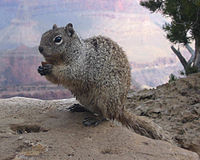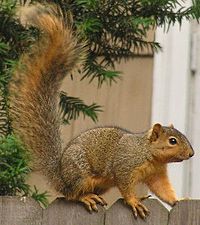| Old World flying squirrels Temporal range: Late Pliocene – Recent | |
|---|---|

| |
| Japanese dwarf flying squirrel, (Pteromys momonga) | |
| Scientific classification | |
| Domain: | Eukaryota |
| Kingdom: | Animalia |
| Phylum: | Chordata |
| Class: | Mammalia |
| Order: | Rodentia |
| Family: | Sciuridae |
| Tribe: | Pteromyini |
| Genus: | Pteromys G. Cuvier, 1800 |
| Type species | |
| Sciurus volans Linnaeus, 1758 | |
| Species | |
Commonly referred to as the Old World flying squirrels, the genus Pteromys is distributed across temperate Eurasia, the Korean Peninsula and Japan. Although there are a host of flying squirrel genera in Asia (particularly southern Asia), Pteromys is the only one present in Europe.
Characteristics
These large-eyed animals are nocturnal and use a membrane stretching from their wrists to ankles in order to glide from tree to tree. They can glide up to 443 feet (135 m) and have a long flat tail. They feed on nuts, seeds, fruit, buds, bark, and insects.
Species
There are two species in this genus:
- Pteromys momonga – Japanese dwarf flying squirrel – Found in Japan (Honshu and Kyushu).
- Pteromys volans – Siberian flying squirrel – Found in northern Europe (mainly Russia and Finland, some isolated populations in the Baltics) and northern Asia from Siberia to Hokkaido
References
- Nowak, Ronald M. 1999. Walker's Mammals of the World, 6th edition. Johns Hopkins University Press, 1936 pp. ISBN 0-8018-5789-9
| Taxon identifiers | |
|---|---|
| Pteromys |
|


